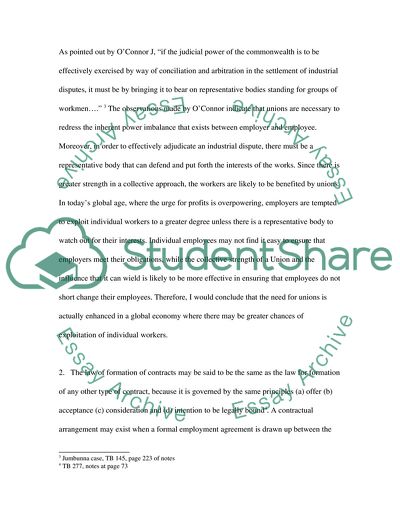Cite this document
(Employment Law the Need for Unions Assignment Example | Topics and Well Written Essays - 4500 words, n.d.)
Employment Law the Need for Unions Assignment Example | Topics and Well Written Essays - 4500 words. Retrieved from https://studentshare.org/macro-microeconomics/1708012-australian-employment-industrial-relations-law-mini-essays
Employment Law the Need for Unions Assignment Example | Topics and Well Written Essays - 4500 words. Retrieved from https://studentshare.org/macro-microeconomics/1708012-australian-employment-industrial-relations-law-mini-essays
(Employment Law the Need for Unions Assignment Example | Topics and Well Written Essays - 4500 Words)
Employment Law the Need for Unions Assignment Example | Topics and Well Written Essays - 4500 Words. https://studentshare.org/macro-microeconomics/1708012-australian-employment-industrial-relations-law-mini-essays.
Employment Law the Need for Unions Assignment Example | Topics and Well Written Essays - 4500 Words. https://studentshare.org/macro-microeconomics/1708012-australian-employment-industrial-relations-law-mini-essays.
“Employment Law the Need for Unions Assignment Example | Topics and Well Written Essays - 4500 Words”, n.d. https://studentshare.org/macro-microeconomics/1708012-australian-employment-industrial-relations-law-mini-essays.


